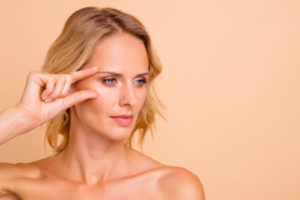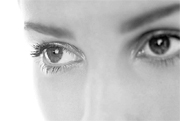The post Now is a Great Time to Schedule a Voluma Treatment appeared first on Andrew Trussler, MD, PLLC.
]]> When we talk about or hear about facial attractiveness, we often focus on a few primary features. It is well-known that the eye is8 naturally drawn to either the mouth or the eyes first, then to other parts of the face. What we don’t often recognize is how all the parts fit together in the creation of harmony. As we age, this harmony can be disrupted due to changes in volume in the upper regions, including the cheeks. When the fatty tissue that pads the cheekbones begins to degrade, the face looks not only wider at the bottom but also looser and saggier with jowls. One of the ways to restore a more youthful shape is to increase cheek volume with Juvederm Voluma. Here, we discuss why more people are turning to dermal fillers like Voluma for cheek enhancement.
When we talk about or hear about facial attractiveness, we often focus on a few primary features. It is well-known that the eye is8 naturally drawn to either the mouth or the eyes first, then to other parts of the face. What we don’t often recognize is how all the parts fit together in the creation of harmony. As we age, this harmony can be disrupted due to changes in volume in the upper regions, including the cheeks. When the fatty tissue that pads the cheekbones begins to degrade, the face looks not only wider at the bottom but also looser and saggier with jowls. One of the ways to restore a more youthful shape is to increase cheek volume with Juvederm Voluma. Here, we discuss why more people are turning to dermal fillers like Voluma for cheek enhancement.
What Is Juvederm Voluma?
Juvederm is a large family of dermal fillers. What began with one product is now several, and Voluma is the first in its class to be made primarily for cheek augmentation. While all Juvederm fillers are made with hyaluronic acid (as are the Restylane products that we use), Voluma is manufactured with precisely-sized particles of this acid to make it more structural. The viscosity of Voluma is designed for injections into deeper layers of tissue, where it can augment the cheeks without making the face look puffy. In addition to cheek augmentation, Voluma may be appropriate for use at the cheek/eyelid juncture known as the tear troughs. Here, the product can smooth the transition line and eliminate the appearance of under eye bags.
How it Works
It is the hyaluronic acid in Voluma that produces changes in the skin. This naturally-occurring chemical is integral to smooth, plump skin. It hydrates and lubricates various body parts by binding to water molecules. One particle of hyaluronic acid can hold one thousand molecules of water. The use of hyaluronic acid presents a convenient and safe mechanism of rejuvenating facial tissue. Patients appreciate that they can see the results of their injections immediately. Side effects are mild enough to resume most normal activities right after treatment, with the exception of any activity that puts pressure on the face. Patients also appreciate that the results of their Voluma treatment can last up to two years before the signs of aging recur.
We’re about to enter into one of the busiest times of year. Make sure you’re ready! Contact our Austin office at (512) 450-1077 to schedule your dermal filler treatment.
The post Now is a Great Time to Schedule a Voluma Treatment appeared first on Andrew Trussler, MD, PLLC.
]]>The post Juvederm® For Facial Volumetric Filling: What are the options? appeared first on Andrew Trussler, MD, PLLC.
]]>
There are numerous facial fillers on the market today and it is hard to objectively differentiate one from the other. Patients do identify with brand names and if it is presented as a hyaluronic acid filler in the tube that is about to be injected into their face, a puzzled and maybe concerned look will emerge. The similar look would be garnered if you were told a neuromodulator was to be injected rather than Botox® or Dysport®, or a biostimulator is to be injected and not Sculptra®.
In-Office Injectables:
- Volumetric fillers: hyaluronic gel fillers like Juvederm®, Restylane®, Voluma®
- Biostimulators: encourage your own bodies collagen growth, Sculptra® and Radiesse®
- Neuromodulators: effect muscle activity to reduce lines, Botox® and Dysport®
Juvederm® is a hyaluronic acid gel filler that is FDA approved for injection into the nasolabial folds and marrionette lines. Hyaluronic acid is a naturally occurring substance that is broken down by the body, making these types of fillers non-permanent, but the cross-linking of the molecules holds the gel together making the degradation of the product slow. There are two forms of Juvederm®, Ultra and Ultra Plus and they differ by the amount of cross linking, with Juvederm® Ultra Plus having more cross linking therefore more stability and longer lasting. The addition of lidocaine to gel adds the “XC” behind the Juvederm® Ultra Plus which makes the injection of this comfortable, without the need for additional local anesthesia.
Juvederm® is injected under the skin to fill in smile lines and permanent creases. It is massaged to a smooth consistency and will absorb water to swell slightly. There is a instantaneous correction which is prone to swelling and bruising for about a week, though the long term effect will last for over a year. Juvederm® is packaged in 1 cc syringes and one must think about a volume needed to achieve the desired correction. On average, one syringe will treat one area, so consider 2 syringes in your initial injection session and then maintain with half of that before a year is up.
Juvederm® has very few side effects with the most common being bruising at the injection site which is limited with the use of ice. Infection and allergic reactions are rare. The bad news is Juvederm® is not permanent and must be re-injected in about a year in a lower volume, but the good news is it is not permanent, so any displacement or overfilling will resolve and/or can be dissolved with hyaluronidase injections.
There are other fillers on the market and Dr. Trussler will discuss what injectable is optimal for each area and each patient. Juvederm® is safe and reliable making it an easy choice for the majority of your in-office facial rejuvenative needs in his plastic surgery practice in Austin Texas.
The post Juvederm® For Facial Volumetric Filling: What are the options? appeared first on Andrew Trussler, MD, PLLC.
]]>The post Lifting the Cheek: What are my midface options? appeared first on Andrew Trussler, MD, PLLC.
]]>Non-invasive procedures such as volumetric fillers can be performed in the office under local anesthesia. Voluma® is a new product which can be injected in the cheek to replace volume that has been lost in this region.
Endoscopic midface lifts are surgical procedures which are performed through a hairline incision with a camera (endoscope) and long instruments to release and raise the cheek area. An open midface lift is performed through a lower eyelid incision and like the endoscopic approach releases and raises the cheek area. Lower eyelid blepharoplasty procedures are typically done in conjunction with a surgical midface lift to help tighten the skin and muscle of the lower eyelid.
Recovery form any midface procedure is about one week and can extend to 3 weeks if a lower eyelid or facelift is performed in conjunction with it.
The post Lifting the Cheek: What are my midface options? appeared first on Andrew Trussler, MD, PLLC.
]]>The post What do I do about dark circles under the eyes? Options for treatment. appeared first on Andrew Trussler, MD, PLLC.
]]>
Dark circles under the eyes are secondary to shadowing and skin color changes in this area. The shadowing is caused by a natural groove in this area called the tear trough.
- The tear trough is created by the deep attachment of the skin and muscle to the underlying bone. It functions to segment the movement of the lower eye muscle, but can worsen with age when the cheek fat descends or the septum holding lower eyelid fat in weakens.
- The skin in this area is as well thin and can have inherent dark pigment or show the dark color muscle underneath.
The majority of the lower eyelid darkening is secondary to the tear trough and/or the naso-jugal groove. This can be corrected with skin hydration with an eye cream which helps moisturize and smooth the lower eyelid skin.
A hydrating moisturizer can be applied to the lower eye in the morning and in the evening as part of the eye care treatment for dark circles.
- The Skinmedica® TNS
 Eye Repair cream based products are easily applied and easily tolerated in this area. This is a growth factor based product which can help stimulate collagen and eliminate fine lines.
Eye Repair cream based products are easily applied and easily tolerated in this area. This is a growth factor based product which can help stimulate collagen and eliminate fine lines. - The A.G.E Eye Complex from SkinCeuticals® is a daily optical diffuser to help deflect shadowing, while improving the skin’s texture through hydration and potent anti-oxidants.
Volumetric fillers such as hyaluronic acid gels like Restylane®, Juvederm® or Voluma® can help to fill a deep groove and level the skin in this area. This may be the first step in treating the dark circles under the eye and is usually indicated in the young woman who has had darkening throughout her life but has worsened in the late twenties or thirties. It is an in-office procedure with minimal recovery. The most frequent complication is bruising and incomplete correction. It usually requires two treatments for a complete correction of the tear trough and may require one to two syringes of filler per eye. Aftercare involves icing for two days and bruising can be covered with makeup. The downside is that fillers are not permanent and the area requires more volume than you would expect to achieve a noticeable result. Fillers in this area can last over one year and usually require half of the volume on reinjection of the areas. Sculptra® may be used in this area to help stimulate collagen growth and smooth lines in this area. This would be a gradual but more permanent solution to an office based treatment for dark under eye circles and is utilized primarily in the cheek area.
Fillers should be combined with skin care to maximize the treatment of the dark eye circles. Chemical peels can be applied to the lower eyelid skin to help tighten the skin and eliminate fine lines. A gentle chemical peel of the lower eyelids can be performed at the same time as a filler. The peel type may be a glycolic acid peel or 10% TCA peel. These can be repeated to optimize the results over a 6 week period.
Surgical options for dark circles and associated a deep tear trough, include lower eyelid blepharoplasty with fat repositioning and ligament release to fill and tightening the lower eyelid. This requires a general anesthesia and a longer recovery, though the results are long lasting and likely more affordable in the long run as compared to repetitive filler treatment. It is not uncommon to perform lower eyelid blepharoplasty on the young patient for this problem. Male and female plastic surgery patients in their thirties may consider this option for the permanent treatment of lower eyelid dark circles.
A consultation with Dr. Trussler in Austin, TX would be the first step to help formulate a treatment plan for lower eyelid dark circles.
The post What do I do about dark circles under the eyes? Options for treatment. appeared first on Andrew Trussler, MD, PLLC.
]]>The post Lip Augmentation: Lip service for fuller lips appeared first on Andrew Trussler, MD, PLLC.
]]>
There are multiple options available for lip augmentation in Austin Texas. They include volumetric fillers, such as hyaluronic acid gel like Restylane® or Juvederm® and fat grafting. These products can be selectively injected into different anatomic areas in the lip to achieve different effects. The gel fillers are fine enough and smooth enough, so they can be injected under the skin to increase the upper and lower lip line, as well fill the mucosa or red part of the lip. Fat can be utilized in this area, though is not fine enough for the lip line. Other options include other autologous sources which by definition are from your own body, which include dermal fat grafts which are more solid than injectable fat, breast capsule and even tendon. Artificial implants include silicone implants which can fill the mucosa of the lip, though these can be prone to scarring and infection.
When evaluating a patient for lip augmentation, I would ask them what effect they are trying to achieve and where they would like the filler to be placed. Common complaints include “a thin upper lip” or “vertical upper lip lines”. The thin upper lip is treated with filler in both the lip line and the lip mucosa, where as lip lines can be injected directly and then balanced with a lip line fill. The bottom lip should as well be addressed to achieve a balanced and natural appearance to the perioral area.
First line products for lip augmentation are the hyaluronic acid gel fillers because they are reliable, easy to inject and reversible. There are minimal risks for infection and nodularity. Typically I first inject the lips with a local anesthetic block of the upper and lower lips which is injected inside the mouth and lasts 4 hours. The filler is injected into the desired location and usually 2 syringes of hyaluronic acid based filler is used. I do prefer Juvederm Ultra Plus over Ultra for mucosal volume because it is more form stable and longer lasting. Restylane® is great for fine lines and a softer, natural look. The total procedure takes about 30 minutes in the office. After the lips are injected I advise the use of ice every 4 hours with the most common complaint being swelling and bruising. This usually resolves after 2 weeks. The volume usually lasts for over 8 months in this area.
Other procedures which can be applied to the lips include laser skin resurfacing and chemical peels to eliminate fine lines, Botox to help smooth fine lines and excisional procedures like the “lip lift” which can help contour the shape of the lip.
All of your options for lip augmentation and perioral rejuvenation will be discussed with Dr. Trussler in the plastic surgery office in Austin Texas. He does perform the procedures in the Austin Texas office and will help guide you to achieving beautiful, natural appearing lips.
The post Lip Augmentation: Lip service for fuller lips appeared first on Andrew Trussler, MD, PLLC.
]]>